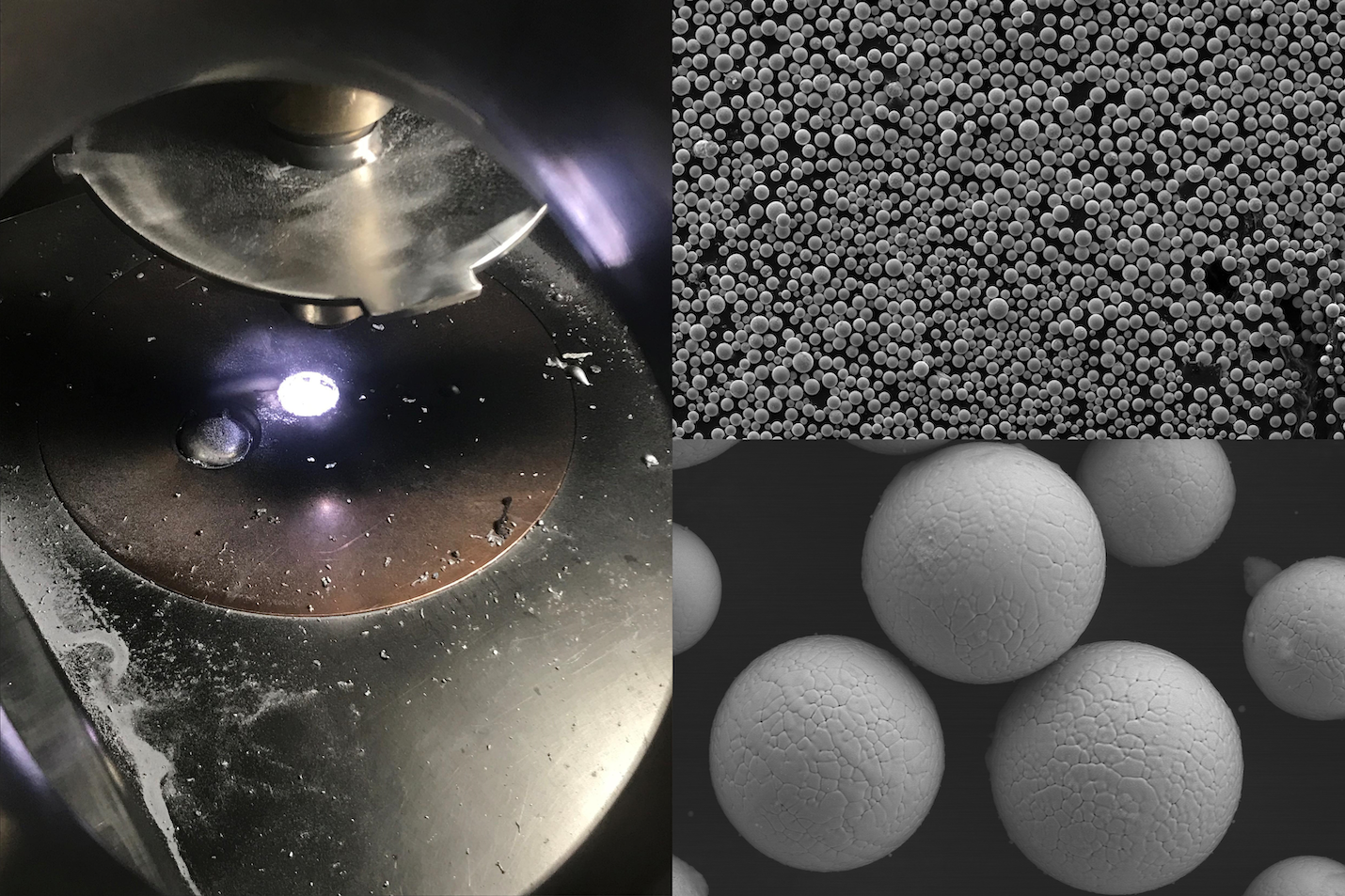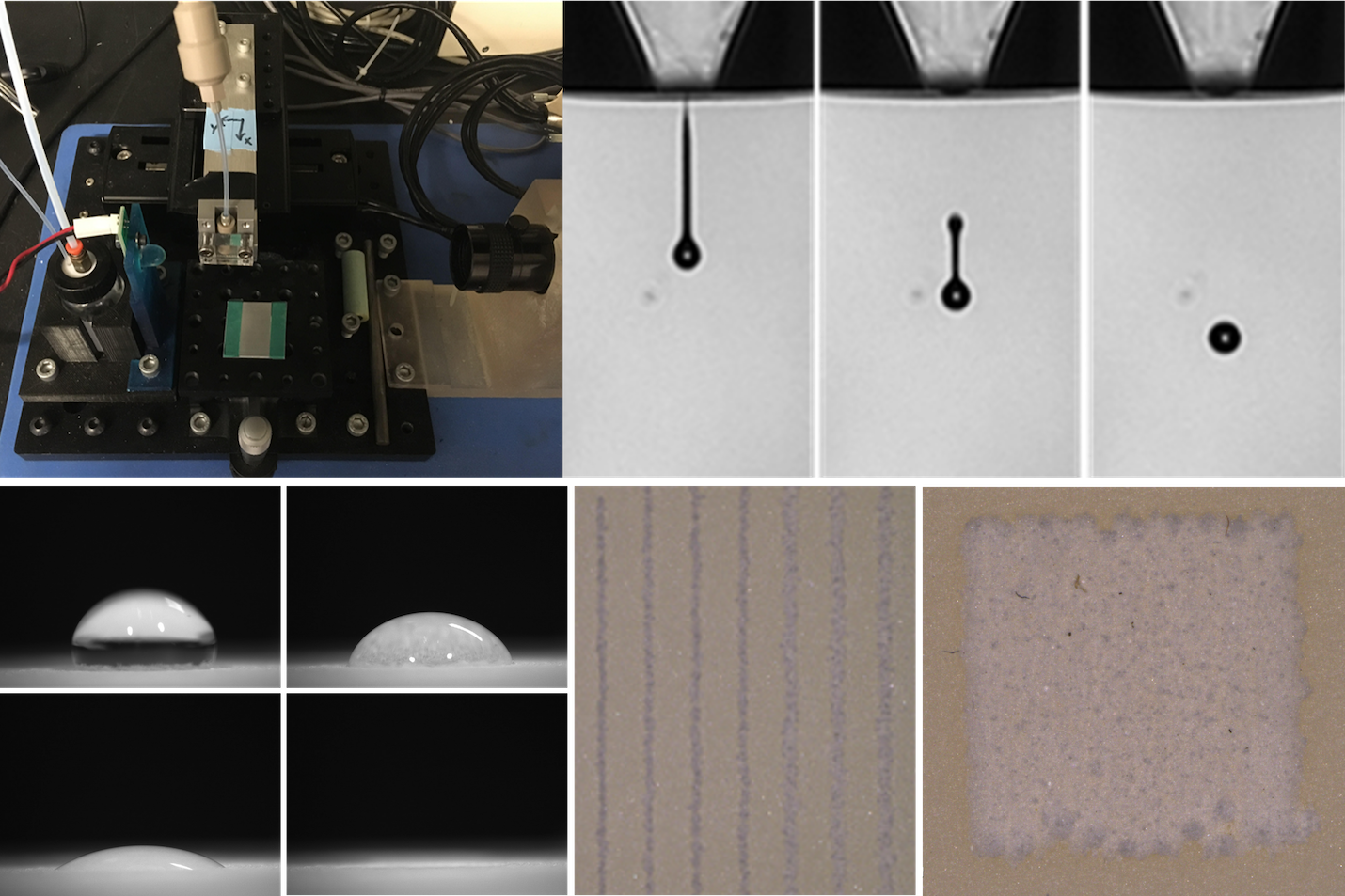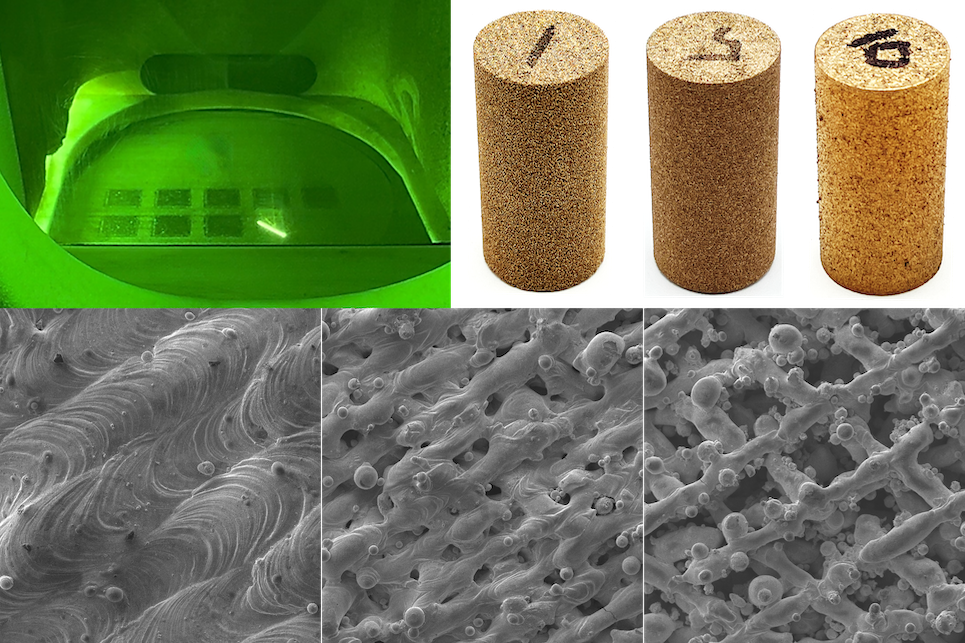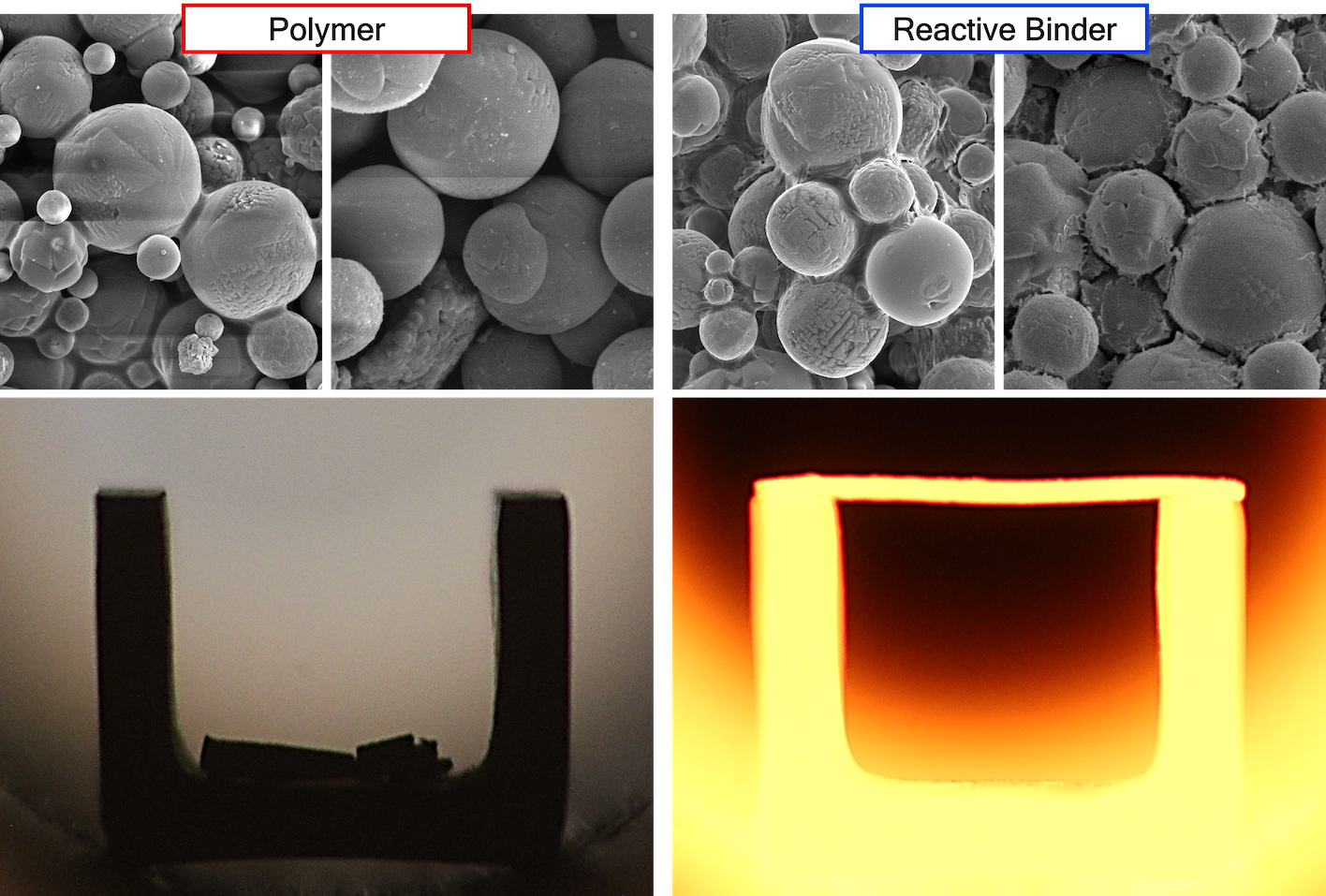Powder synthesis and processing of novel alloys
Synthesis of high-quality powder feedstock is a critical need for evolving powder-based manufacturing methods, including metal additive manufacturing. We are exploring fundamentals of ultrasonic atomization for synthesis of novel refractory and magnetic alloys, probing the influence of processing environment and parameters on powder morphology and composition. By coupling feedstock atomization with advanced powder processing (SPS and AM), we are generating novel insights into process-structure-property relationships for advanced powder synthesis and processing methods.
Nanoparticle jetting of functional ceramics
Inkjet deposition of nanoparticle ceramics unleashes the ability to locally tailor their composition, microstructure, and geometric properties for functional applications. Through fabrication of custom processing testbeds and characterization techniques, we are exploring the fundamentals of nanoparticle ceramic material jetting, from ink development, to deposition/drying mechanics, to sintering of nanoparticles. By developing process fundamentals and establishing a framework for the synthesis of novel inks, we will enable the fabrication of high-resolution, millimeter-scale, spatially-tailored functional ceramics.
Additive manufacturing of porous materials
Porous materials provide an additional design parameter to control properties beyond those intrinsic to the material. We are establishing the fundamentals of porous material fabrication in powder bed fusion, implementing a novel approach through parameter-induced porosity. We are developing a fundamental theory and predictive models for new alloys and seeking to understand parameter-porosity relationships as well as the limits of parameter-induced porosity generation. By establishing a process-structure-property framework for parameter-induced porosity in additive manufacturing, we enable spatially-tailored control of mechanical, thermal, electrical, and capillary properties.
Reactive binder jet additive manufacturing
Binder jet additive manufacturing (BJAM) is particularly suited to processing brittle materials such as ceramics as its process flow separates the steps of shaping and densification. Polymer binders are typically used in BJAM, including for the processing of ceramics. However, ceramic components in the green state are especially prone to distortion or fracture during sintering due to the low strength of polymer-bound parts after polymer decomposition and high sintering temperatures of ceramics. Through custom testbed fabrication, we are exploring the fundamentals of reactive binder jet additive manufacturing. Our work establishes new knowledge for binder development, inkjet deposition, and evolution during sintering of reactive binders and components. By developing and implementing novel non-polymer binder compositions for reactive binder jetting, we can reduce part distortion, control densification, and even develop novel composites during the sintering process.
Multi-material binder jet additive manufacturing for hot pressing
Processing of ultra-high temperature ceramics (UHTCs) and their composites to high density requires densification by pressure-assisted sintering. Current near-net-shape fabrication techniques lack compatibility with pressure-assisted sintering, thus restricting the applicability and characterization of UHTCs. Through custom testbed fabrication, we are exploring the fundamentals of multi-material powder bed deposition and pressure-assisted sintering in order to couple near-net-shape processing with pressure-based sintering . Our work establishes new knowledge for diffusion, densification, and distortion of multi-material interfaces. By understanding the process fundamentals for this new methodology we enable high density fabrication of UHTCs and UHTCMCs with complex geometries.
Thank you to our sponsors, both past and present!




